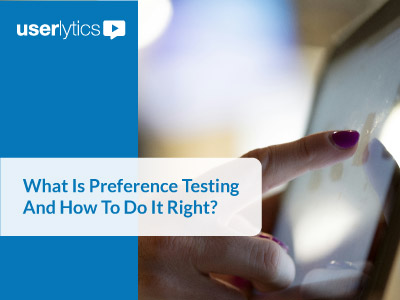Target Customer for UX Testing
Target for User Research
As a UX researcher or designer, it’s important to have a clear understanding of your target customer before beginning a remote UX study.
Target user research is crucial for designing user-centric products and services. It helps ensure that the end result aligns with the users’ expectations, leading to improved user satisfaction, engagement, and adoption.
Leveraging advanced UX research tools is crucial for effectively identifying and understanding your target users, ensuring your research is both comprehensive and precise
There are a few different ways that you can identify your target customer for UX testing. In this blog post, we’ll explore a few of those methods and offer some tips for making the most out of your target customer research. Keep reading to learn more!
What Is Target User Research?
Target user research, also known as user profiling or user persona development, is a process used in UX design to understand and define the characteristics, needs, and preferences of the target audience for a product or service.
It involves conducting research and gathering insights about the users who are most likely to use or benefit from the product.
The goal of target user research is to create a detailed and accurate representation of the target users, which helps inform the design and development process.
By understanding the users’ motivations, goals, behaviors, and pain points, designers and product teams can make informed decisions that align with user needs and preferences.
What Is the Process of Researching Target Users?
The process of target user research typically involves several steps.
Defining the target audience: This involves identifying the specific group or groups of people who are likely to use the product or service. This may be based on demographic factors (age, gender, location), psychographic factors (values, interests, lifestyle), or other relevant criteria.
Conducting user research: Researchers gather data and insights through various methods such as interviews, surveys, observations, and usability testing. This research aims to understand users’ behaviors, attitudes, goals, and challenges related to the product or service.
Analyzing and synthesizing data: The collected data is analyzed and synthesized to identify patterns, trends, and common characteristics among the target users. This information helps in creating user personas or profiles that represent different archetypes of users.
Creating user personas: User personas are fictional representations of the target users, typically created as detailed profiles that include information such as demographics, motivations, goals, needs, and pain points. Personas help the design team empathize with and understand the target users’ perspectives.
Applying personas in design and development: User personas are used as a reference throughout the design and development process. They guide decision-making, help prioritize features and functionality, and ensure that the product or service meets the needs and expectations of the target users.
Consider your Product / Service
As a UX researcher, you must consider what type of product or service you’re offering. What need does it address? Once you have a good understanding of that, you can start to narrow down who would be most likely to use and benefit from it. Think about factors like age, gender, location, and interests.

Consider your Direct Competitors
Understanding your competition can be a helpful way to gain insights into the minds of your target customers. What are they looking for? What do they value? What motivates them?
By answering these questions, you can begin to get a better idea on who your own target customer is. You can even consider A/B testing your competitor’s product or digital asset against your own to gain a clearer understanding of what your customers prefer among each brand.
By understanding your competition, you can also get a better sense of your own unique selling points. This can help you craft a more effective marketing strategy and position yourself in the market more effectively.

Use Existing Customer Data
Use any existing qualitative data you have about your customers to help inform your decision. Who typically uses your product or service? Is it skewed toward one gender in particular or a specific age segment?
While part of your reason for conducting remote UX testing is likely to gain a more accurate picture of your target persona, you likely already have some of the pieces of information needed to complete the puzzle of who they are and what motivates them.
Some areas of both qualitative and numerical data you may be able to look at to gain a better understanding of your target customer are your social media following demographics and business reviews for your brand on Google or Yelp.

Ask your Customers Directly
And if all else fails, reach out to who you suspect to be your target market directly and ask them! This can be achieved by conducting market research, surveys, and interviews with your potential users via a Userlytics unmoderated or moderated usability study.
You can ask them if your product or service is one they have used in the past, or one they would be likely to use. Use advanced UX testing metrics like the System Usability Scale (SUS) or Net Promoter Score (NPS) to gauge their interest in your brand.
Once you know who your target customer is, you can tailor a follow up UX study to their needs and ensure that you’re getting accurate feedback.

Analyze Results and Begin Iterative UX Testing
Once you have an idea of who your target customer is, you can begin more thorough UX testing with members of Userlytics’ global panel, your own contacts, or if needed, specially recruited participants for a very niche persona. The results you gather from your first rounds of testing will give you an idea as to whether or not your initial assumptions about your customer were correct.
Remember: UX testing is not a one-time effort. In order to build a truly memorable and positive user experience for your customers, you must continually gather data from them on what their changing needs and expectations are.
Userlytics can help you segment your audience and continually test them over time to ensure your product or service is meeting their needs.

Conclusion – Key Takeaways
Now that you know how to identify your target customer, it’s time to put that knowledge into practice. At Userlytics, we assist your research objectives with your target Persona so you can gather the data needed to improve your customer experience and the usability of your website or app. We have a panel of over 1,300,000 participants from all over the world who are ready and willing to give feedback on your prototypes and designs. Contact us today to get started!
Interested in UX Testing?
Data Visualizations
About the Author: Elise Rodriguez

Elise is the Editor of Content and Communications at Userlytics. Prior to joining Userlytics’ content team, Elise worked in the public relations field, and helped develop communications materials for companies in a variety of industries, including health and beauty, travel / transportation, and sports / entertainment. Elise has her BS in public relations, and her Master’s degree in business management. When Elise isn’t writing about new product features at Userlytics, she enjoys singing and making music, yoga, and spending time at home with her two cats.
Read More Articles by Elise





